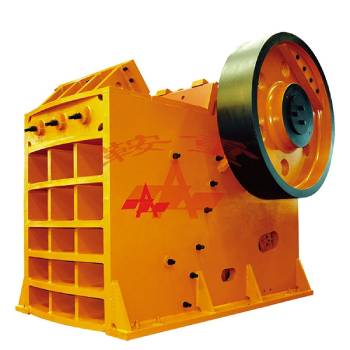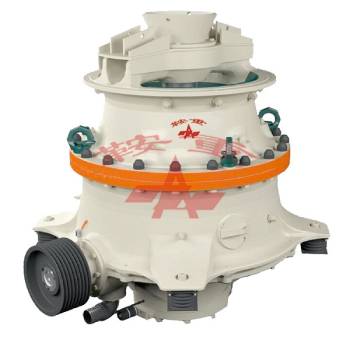
 8 Major Advantages of Anzhong
8 Major Advantages of Anzhong+86 152 4210 2697
There are three sorts of crushers. Types of crusher depend on the feeding method. These are- Main crusher, Second crusher, as well as Tertiary crusher. The primary crusher is only for the splitting of huge rocks right into pieces (this suggests the key crusher is not for the aggregate dimension material.). Examples of primary crushers are jaw crusher; hammer mill crusher and also gyratory crusher. After obtaining the primary crusher crush the material and also produce a new fresh decreased size of the source product. The primary crusher has only functioned as much as that factor. A secondary crusher enters into activity and reduces the dimension. In the second crushers, some dimensions of rocks might pass directly from the sieve number. In the long run, tertiary crusher reduces the size of crushed items quite to the called for dimension and it also brings excellence to the crushed material. Tertiary crushers are at the task site as well as these are small in size.
These devices are used majorly in the field of building, metallurgy, chemical as well as silicate industry, mining, and roadway building. It's a no-brainer that both these machines, i.e. the jaw crusher as well as the cone crushers find their utility in the crushing process.
A nonprofessional is should certainly make use of the names for these makers alternatively, yet there are numerous differences between both popular types of equipment. Allow us to go through a comparative analysis between the cone crusher and also the jaw crusher.
It is among the primary types of primary crushers in a mine or ore handling plant. The dimension of a jaw crusher is marked by the rectangular or square opening at the top of the jaws. Key jaw crushers are regular of the square opening design, and also additional are of the rectangular opening design. It minimizes the plus size of rocks or ore by putting the rock right into compression. A fixed jaw, installed in a "V" positioning is the fixed breaking surface, while the movable jaw exerts pressure on the rock forcibly it against the fixed plate. Because of their smaller sized physical dimension, jaw crushers are also excellent for limited areas, such as below ground mining and mobile squashing applications.
Newer the designs are more concentrated on safety and security and also easy upkeep. Hydraulic separation and also specific training of coverings remain in a fad that creates a much better atmosphere for any type of employees on-site working with the tools

Jaw Crusher
It is a compression type of equipment that minimizes material by pressing or pressing the feed material in between a moving item of steel and also a fixed piece of steel. The crushed material is released at the bottom of the maker after they pass through the tooth cavity. These kinds of crushers are popular rock crushing devices in aggregate production, mining procedures, as well as recycling applications. They are typically utilized in second, tertiary, and also quaternary squashing stages.
The new hybrid models of it featured multi-cylinder hydraulic cone systems fit for the second or tertiary phases of crushing plants by changing body linings and adaptors. It features automatic control and fingertip adjustment system as well as two hydraulic cylinders that have a protective result that if one overloads, then an additional one can quickly respond to clear choke simply by remote.

Cone Crusher
A Jaw crusher is made up of 2 jaws- the dealt with one and the relocating one. The maker is used to squash larger sized rocks in an activity appearing like that of a nutcracker. The crushing procedure reduces the size of the rocks. The chute that filters the rocks is integrated in such a manner in which it narrows towards the base. This assists in filtering system the rocks and enables just a specific size of rocks to go through.
A cone crusher's parts that are repaired and also the movable cones are similar to that of a jaw crusher. The major functional distinction is that the cone crusher uses both the cones to grind ores and rocks right into smaller pieces. The input is fed in between both cones as well as the result is released from the discharge hole at the end of the cones.
A jaw crusher's system is really easy. The movable jaw drives the movable jaw plate while the taken care of the jaw does the reciprocating moving activity. Therefore the product gets crushed quickly. A cone crusher, on the other hand, operated on the concept of turning oscillatory movement. The stress on the stones acts when in between both cones. Both cones do the eccentric turning activity and also create a pressure strong sufficient to crush the acid rocks. The bending force, shearing force, as well as rubbing force result in a strong force that inevitably breaks the rocks.
A Jaw crusher is made use of for the function of primary squashing. Hence the rocks fed as input are of plus size. It is able to squash material in the range of 125 mm to 1500 mm. A cone crusher is utilized for second crushing. The input to the cone crusher is a lot smaller and fragmented than that in the jaw crusher. The granularity of the products that are squashed in the cone crushers is about 35mm to 350 mm. A cone crusher is ideally suitable for the squashing of products with high hardness like granite, marble, stones, dolomite, rhyolite, and diabase.
There are several differences between the two machines however both find high utility in squashing processes. They are made use of for different objectives and also have great significance.
Anshan Anzhong Mining Machinery Co., Ltd.
swan0119
No.294 Anqian road, Gaoxin district, Anshan, Liaoning,China
Copyright © Anshan Heavy Duty Mining Machinery Co., Ltd. All Rights Reserved | Sitemap
